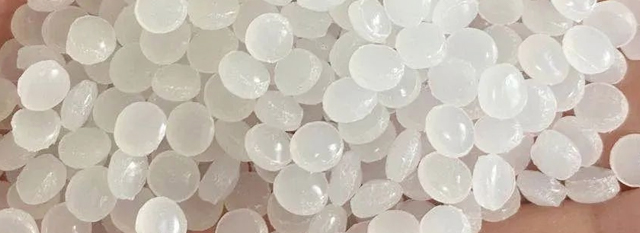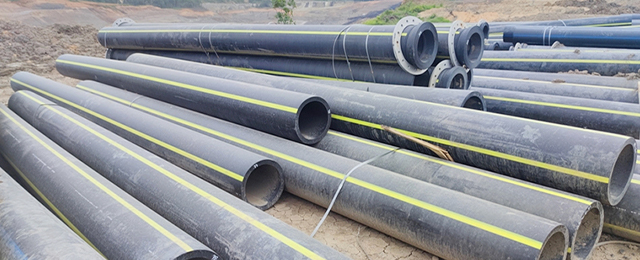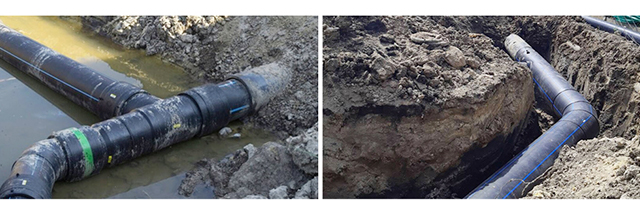- Gate valve
-
- DN1000 Extension stem double flange soft seal gate valveDIN F4 resilient seated gate valveDN450-1200 Resilient Seated Gate ValveDIN F5 resilient seated gate valveSocket connection soft seal gate valveUnderground cap soft seal gate valveBS5163 rising stem soft seal gate valveHard seal gate valveAPI slab Gate ValveStainless steel flange gate valveWafer knife gate valvePneumatic gate valveSoft seal gate valveExtension stem gate valveUL/FM fire protection groove ends gate valveRising stem forged steel gate valvecarbon steel gate valveStainless steel threaded gate valveDIN soft seal gate valveANSI soft sealing gate valve 200PSICast iron gate valveBS resilient seated gate valve
- Butterfly valve
-
- DN900 pneumatic triple eccentric hard seal butterfly valveD643H Triple Eccentric Butterfly ValveD343H Hard seal butterfly valveMulti standard EPDM seated butterfly valveSingle flange butterfly valveDN2000 Double eccentric butterfly valveFlange butterfly valveLug butterfly valveWafer butterfly valve with handleWorm gear operated butterfly valveWafer lined fluorine butterfly valveStainless steel wafer butterfly valveStainless steel flanged butterfly valveThree eccentric flange butterfly valvePneumatic flanged butterfly valvePneumatic wafer butterfly valveTriple eccentric butterfly valve wafer typeWafer butterfly valve ULC approvedInflatable seat butterfly valveHigh performance butterfly valveGrooved end butterfly valveElectric soft seal butterfly valveFlange fluorine lined butterfly valveHandle aluminum butterfly valveWorm Gear Aluminum Butterfly ValveFull PTFE lined butterfly valve wafer typeOne stem no-pin wafer butterfly valveMulti standard aluminum stem butterfly valveStainless Steel wafer Butterfly ValveAluminium handle operated lug butterfly valveLever Operated Flange Butterfly ValveButterfly valve stemButterfly valve discButterfly valve seat
- Ball valve
-
- DN1400 top-mounted eccentric semi-ball valveFlanged three-way ball valveFully welded ball valveNatural gas ball valveHigh platform flange ball valve1 PC ball valveFixed ball valvePTFE seat flanged ball valveMetal seat ball valveAPI 6D ball valve3 Piece ball valveFull Bore 3 way ball valve L-Port3 Way T-Port ball valve2PC Ball valve female thread stainless steel
- Globe Valve
-
- API Carbon Steel Globe ValveBellows Globe ValveStainless steel flange globe valveStainless steel thread S type globe valveStainless steel thread B type globe valveCast Steel Globe ValvePiston Globe ValveWCB Carbon Steel Globe Check Valveelectric motorized control stainless steel SS316 globe valveBrass Globe ValveCryogenic Globe valveHT200 Globe ValveThreaded Stainless Steel Globe ValveGG25 Globe ValveANSI API Cast Steel And Stainless Steel Globe valve
- Check valve
-
- Rubber seal check valveDN800 Slow closing check valveDN800 Rubber Disc Check ValveButterfly Buffering Check Valvecheck valve with counter weightSilent Check ValveWCB Swing check valveSwing Check ValveSingle Chip Check Valve H74WStainless Steel Wafer Check ValveSwing Start Check ValveFoot check valveAPI Swing Check ValveDIN Flange check valveSingle plate check valveLifting Check ValveBottom ValveHammer Diminish Noises Check ValveWafer Check ValveWafer dual plate check valve
- Control valve
-
- Static Balancing ValveCage Guided Sleeve Globe Control ValveDN1000 Piston Flow Regulating ValveDN1600 Electric Actuator Flow Regulating ValvePneumatic Flanged Butterfly ValvePneumatic Wafer Butterfly ValveAngle Seat ValvePneumatic gate valveElectric three-way control valveElectric sleeve control valve
- Water Meter
-
- Vertical Type Water MetersStainless steel threaded water meterPiston water meterPlastic water meterMore flow rotor dry water meterspiral vane flange water meterCI wotlman water meter with pulse outputLXCLG(R) Vertical removable element woltman cold (hot) water meterSingle flow rotor dry water meterPrepaid Token Water MeterElectromagnetic flowmeterRotary Piston Liquid Sealed Water MeterRotary Piston Liquid Sealed Water Meter
- Air valve
-
- Double ball exhaust valveDoubleair Air Valve SaudiDoubleair Air Valve Southeast AsiaDoubleair Air Valve South AmericaDouble Air ValveThreaded Air ValveSingle Air ValveTriple Functions Air ValveAutomatic Air Release ValveAutomatic release valveAutomatic exhaust valveComposite Exhaust Air ValveBrass exhaust valveDouble Ball Air Valve
- Pipe Repair & Coupling
-
- Flexible Multi-Function Pipe Coupling ZFJ-SSS Semi-Circle Pipe Repair Clamp SJW-HDuctile Iron Band Repair ClampStainless Steel Band Repair ClampDouble-Section Pipe Repair CouplingFolding Type Pipe RepairSingle-Section Multi-Function Pipe Coupling MF-SGear-Ring Type Multi-Function Pipe Coupling GR-SZBW Damping Corrugated Hose
- Dismantling Joint
-
- VSSJAFC(CC2F) Detachable Flange Transmission JointVSSJA-2(B2F) Double Flange Limited Expansion JointVSSJA-1(BF) Single Flange Limited Expansion JointVSSJA(AF) Flange Loose Expansion JointJGD-B Threaded Rubber JointZBW Damping Corrugated HoseKXT-S Flexible Dual-Spherical Rubber JointKXT Rubber Soft JointFlange Adaptor
Why are HDPE pipes favored by water supply projects
High density polyethylene pipe (abbreviation: HDPE)
High-density polyethylene pipe, the material is "HDPE", referred to as "High Density Polyethylene". HDPE is a highly crystalline, non-polar thermoplastic resin. The appearance of original HDPE is milky white, and it is translucent to a certain extent in thin sections.
HDPE has good heat resistance and cold resistance, good chemical stability, high rigidity and toughness, good mechanical strength, good dielectric properties, and good environmental stress cracking resistance.
Advantages of HDPE pipes:
①Good impact resistance
The low-temperature catalytic temperature of HDPE pipes is extremely low and can be used safely within the temperature range. During winter construction, HDPE pipes have good impact resistance and will not cause pipe brittleness.
②Good chemical corrosion resistance
HDPE pipes can withstand corrosion from a variety of chemical media, and chemicals present in the soil will not degrade the pipes.
③Aging resistance, long service life
HDPE pipes can be stored or used outdoors for 50 years without being damaged by UV radiation.
④Good wear resistance
HDPE pipes have better wear resistance than steel pipes in the field of transportation, which means HDPE pipes have longer service life and better economy.
⑤Various construction methods
HDPE pipes have a variety of construction technologies. In addition to traditional excavation methods, a variety of new trenchless technologies such as pipe jacking, directional drilling, lining pipes, cracked pipes, etc. can be used for construction. Optional construction There are many ways.
⑥HDPE pipe is widely used
Problems in the application of HDPE pipes in water supply and drainage projects:
1. The HDPE pipe is damaged.
HDPE pipes are damaged because the pipe itself is soft, has good toughness, and is prone to deformation. This characteristic causes the pipe to easily break due to wrinkles and damage the pipe wall, leading to water leakage and seriously shortening the service life of the pipe. Water supply and drainage engineering Forming quality hazards and reducing the reliability and safety of municipal projects.
2. Improper handling of pipe joints may cause water leakage.
The phenomenon of water leakage at pipe joints is relatively common in water supply and drainage projects. The main reasons for similar phenomena are: uneven quality of HDPE pipes, large differences in pipe diameters and sizes, substandard chamfering of pipe insertion parts, etc. During the pipe connection process, the pipe and the rubber ring are squeezed, causing the rubber ring to be twisted and unable to achieve a tight function. The socket cannot reach the depth it should be, and the pipe cannot be inserted into the specified position, which ultimately leads to leakage at the joint.
3. Pipe deformation and floating.
During the construction of water supply and drainage projects, the pipeline foundation was not flat enough, causing the HDPE pipe to deform due to the extrusion of the soil during the backfilling process. Compared with steel pipes, HDPE pipes are much lighter, so when HDPE pipes encounter groundwater, they are prone to floating. When the groundwater level exceeds the bottom of the pipeline trench during the construction process, the pipeline will float due to lack of precipitation treatment or poor precipitation treatment.
Relevant measures to improve HDPE pipe construction in water supply and drainage projects.
1. Choose a higher pipe ring stiffness.
The ring stiffness of HDPE pipes is the main indicator and comprehensive parameter of the pipe's ability to resist external loads.
In order to avoid damage and leakage caused by pipe wrinkles, HDPE pipes with higher ring stiffness should be used as much as possible when selecting pipe materials. When selecting plastic buried drainage pipes with a diameter greater than 500mm, use pipes with a ring stiffness of 8KN/㎡.
For drainage pipes with good construction geological conditions and no pipe transportation load, pipes with a ring stiffness of 4KN/㎡ should be selected.
Plastic buried pipes with a diameter between 500mm and 1200mm must use pipes with a ring stiffness of 8KN/㎡, and must undergo strict buckling instability calculations, deformation calculations, and structural design calculations, and use controlled pipeline foundations and backfill materials. , layered compaction and other methods to strictly control the quality of laying construction.
When choosing plastic buried drainage pipes with a diameter greater than 800mm, fiberglass sand-filled pipes and metal-reinforced composite winding pipes with a ring stiffness greater than 8KN/m should be selected in important projects. When using thermoplastic pipes with a ring stiffness less than 8KN/m, strict structural design and strict construction control are required. When backfilling, the density of the backfill soil in the main section should be less than 95%, and the density of the backfill in the secondary section should be less than 95%. Degree should be <90%.
2. Choose the interface method of HDPE pipe reasonably and handle the joint well.
Commonly used HDPE pipe connection methods include electric welded pipe hoop connector connection, butt welding connection, threaded connection method, flange connection method, socket-type casing connection with sealing ring, linear telescopic socket connection and other connections. Way. Various connection methods have different advantages and disadvantages, their use occasions are different, their installation methods are different, and their respective performances are also different. In the connection of HDPE pipes, the best connection method is to use fusion welding instead of soluble adhesives and pipe fittings. The traditional hot-melt socket connection has certain shortcomings, so new connection methods such as electric hot-melt connection have appeared in recent years. Electric hot fusion connection uses hot fusion butt welding machines and electric hot fusion welding machines and other construction machines for connection construction.
At present, the connection method of pipes has gradually developed into the use of steel-plastic transition joints when connecting to metal pipes. The connection methods mainly use electrofusion and hot melt methods to connect pipes and elbows, tees, and reducing joints. When connecting other pipe fittings, electrofusion connection is used. When connecting to pipes made of other materials, special flange connection method and inspection well method are used for mechanical connection. The interface form of pipes should use sealing ring flexible interfaces as much as possible, and heat shrink sleeves are not suitable for connection. Before using the rubber ring, check whether the rubber ring is in good condition and clean the working surface within the interface range.










